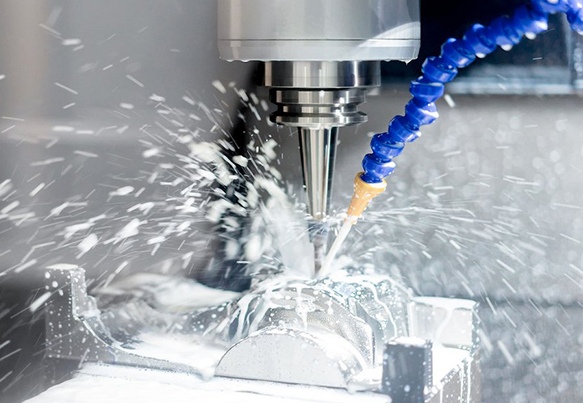In modern manufacturing, precision, efficiency, and automation are critical. Understanding how a CNC Milling machine works helps manufacturers, engineers, and hobbyists maximize its potential. This article covers the basics of CNC Milling, machine functionality, and key aspects such as axes and operations.

What Is CNC Milling?
CNC milling is a subtractive manufacturing process where a computer numerical control (CNC) machine removes Material from a workpiece to create a desired shape or design. Unlike manual milling, CNC milling allows for high precision, repeatability, and complex geometries. It is widely used in Industries such as aerospace, automotive, electronics, and metalworking.
What Is a CNC Milling Machine?
A CNC milling machine is a computer-controlled machine that automates the milling process. It uses rotating cutting tools to remove material from a workpiece based on a programmed design. The machine’s computer system ensures accurate movement, precise cutting depth, and consistent production, making it ideal for both prototype and large-scale manufacturing.
Key components of a CNC milling machine include:
Spindle: Holds and rotates the cutting tool.
Worktable: Secures the material being milled.
Control Panel: Allows operators to input programs and control the machine.
Axes System: Determines the movement directions of the tool and table.
What Is Milling in CNC?
Milling in CNC refers to the process of cutting and shaping material using a rotating tool. It can perform various operations such as:
Face Milling: Produces a flat surface.
End Milling: Cuts slots, pockets, and contours.
Drilling & Boring: Creates precise holes.
3D Contouring: Produces complex shapes and curves.
CNC milling enables high precision and efficiency that traditional manual milling cannot achieve, especially for complex or repetitive parts.
How a CNC Milling Machine Works
Understanding how a CNC milling machine works involves looking at the step-by-step process:
Design Creation: A CAD (Computer-Aided Design) model is created.
CAM Programming: The CAD model is converted into a CNC program using CAM (Computer-Aided Manufacturing) software.
Machine Setup: The workpiece is secured on the machine’s worktable, and the appropriate cutting tools are installed.
Machine Operation: The CNC program controls the spindle, cutting tool, and axes to remove material according to the design.
Finishing & Inspection: The final piece is cleaned, inspected, and verified for accuracy.
The entire process is automated, reducing human error while improving consistency and productivity.
How Many Axis in CNC Milling Machine?
The number of axes in a CNC milling machine determines its complexity and versatility. Common types include:
3-Axis CNC Milling Machine: Moves in X, Y, and Z directions. Suitable for simple parts and flat surfaces.
4-Axis CNC Milling Machine: Adds rotation around the X-axis (A-axis) for angled cuts.
5-Axis CNC Milling Machine: Adds two additional rotational axes (A and B), allowing complex 3D shapes and multi-surface machining.
More axes provide greater flexibility and allow machining of intricate designs in a single setup, reducing production time.
A CNC milling machine is a powerful tool for modern manufacturing. Understanding what is CNC milling, what is a CNC milling machine, what is milling in CNC, how a CNC milling machine works, and how many axis in CNC milling machine can help engineers and manufacturers optimize production, achieve higher precision, and reduce costs.





 English
English

